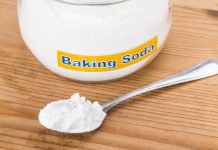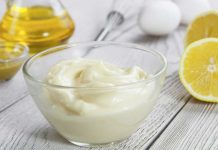A high-fat eating routine upsets the internal elements of the stomach, and this could add to cardiovascular disease danger, as shown by another report.
The experts analyzed the association between sleek weight control plans, stomach life forms, and the risk of making heart contamination in mice.
The disclosures might uncover knowledge into the particular instrument through which high-fat eating regimens increase the risk of cardiovascular afflictions — and how to hinder these unfavorable outcomes.
A high-fat eating schedule, for instance, one that integrates a ton of reasonable food, constructs the risk of cardiovascular contaminations. This sort of diet intrudes with common working in the stomach and advances the improvement of dangerous microorganisms.
Likewise, stomach life forms convert manufactured intensities in oily food sources into a destructive metabolite that progresses atherosclerosis — an issue where the plan of plaques restricts the stockpile courses.
As of in the relatively recent past, scientists were unsure of the particular part through which stomach life forms caused heart sicknesses. As of now, experts at Vanderbilt University Medical Center, in Nashville, TN, have chosen to explain this wonder.
Their revelations appear in the journal Science.
Diet and coronary illness
As the World Gastroenterology Organization makes sense of, the food we eat has complex connections with the stomach, including its microbiota.
The stomach microbiota assumes a significant part in human wellbeing and the avoidance of sickness. Thus, changes in its normal working might have an impact on a few ailments, like peevish gut syndromeTrusted Source, obesityTrusted Source, and cardiovascular disease Trusted Source.
Before now, researchers had frequently pondered the connection between the digestive organs, stomach microorganisms, and well-being results.
Their examination in mice uncovers that persistent openness to a high-fat eating regimen harms the digestive epithelium and causes poor-quality irritation. It likewise shows that a high-fat eating routine disrupts the energy-producing elements of the mitochondria.
we estimated that the harm to the digestive mucosa brought about by a high-fat eating regimen could be driving negative changes to the stomach microbiota, including the extension of unsafe microorganisms (e.g., Enterobacteriaceae) and advancing illness.
Our examination is tracking down that the host cells, explicitly the digestive epithelium, assume a vital part in tweaking microbiota capability, and can ‘turn on or ‘switch off’ metabolic pathways in the microorganisms that will straightforwardly influence risk for specific sicknesses.
This supports past examinations that show that a sound gastrointestinal epithelium is significant in supporting gainful microorganisms and keeping up with digestive wellbeing.
Exclusively by completely grasping the connection between the host — us — and stomach microorganisms during wellbeing and illness are we going to have the option to plan treatments that will be compelling in controlling stoutness and corpulence-related results like cardiovascular sickness.
Testing theories
The researchers utilized creature models in testing their speculations. To start with, they saw that in high-fat weight control plans, stomach microbiota switched dietary choline over completely to trimethylamine. This was additionally changed over completely to trimethylamine N-oxide (TMAO) by the liver.
TMAO adjusts cholesterol digestion, prompting the development of plaque stores in the corridors — which brings about atherosclerosis.
Then, the group noticed that a high-fat eating routine upset the customary elements of the mitochondria, prompting expanded oxygen and nitrate creation. Subsequently, these gases energized the development of possibly sickness-causing Enterobacteriaceae microorganisms, like Escherichia coliTrusted Source.
These discoveries affirmed the scientists’ speculations about the job of high-fat eating regimens on sickness results. It likewise made sense of the exact systems through which these illnesses could happen.
Furthermore, in a key finding, the specialists exhibited that after treatment with the medication 5-aminosalicylic corrosive, ordinary mitochondria oxygen and nitrate levels were re-established. Besides, the medication additionally eased back the expansion in flowing TMAO in the creature models.
While these outcomes are fascinating, the analysts recognize that their review had limits. To start with, they directed their examination in mouse models, not human members. Second, the review didn’t show an expansion in cardiovascular sickness. This is on the grounds that it expected explicit mouse lines that were inaccessible because of the COVID-19 pandemic.
Notwithstanding, there are plans for follow-up examinations to show that an expansion in TMAO because of a high-fat eating routine straightforwardly advances atherosclerosis and cardiovascular illnesses.
Up to that point, they are satisfied that their review has had the option to exhibit how dietary options might be advancing the endurance of hurtful microorganisms in the stomach.
































